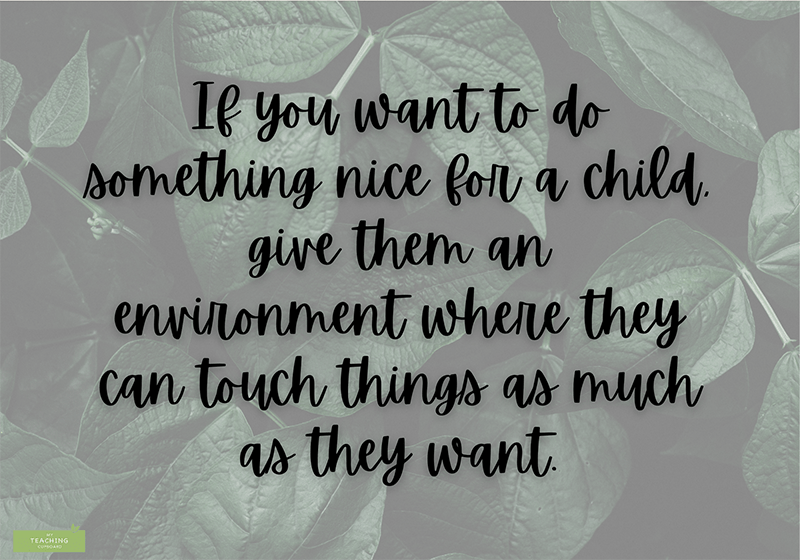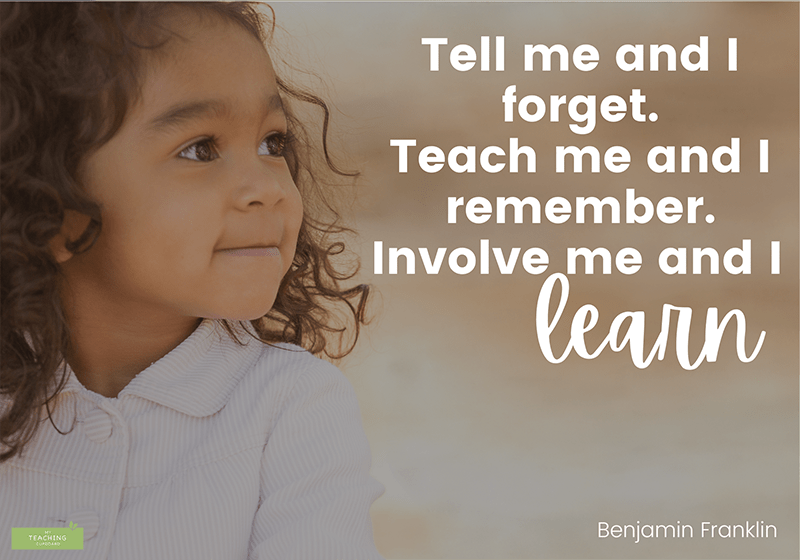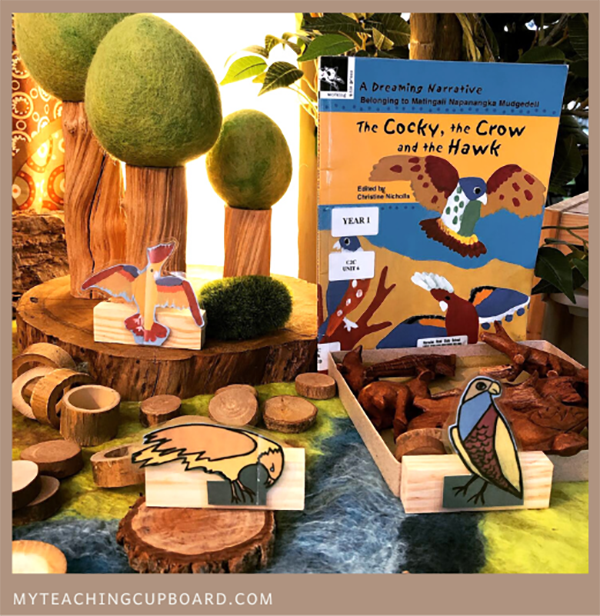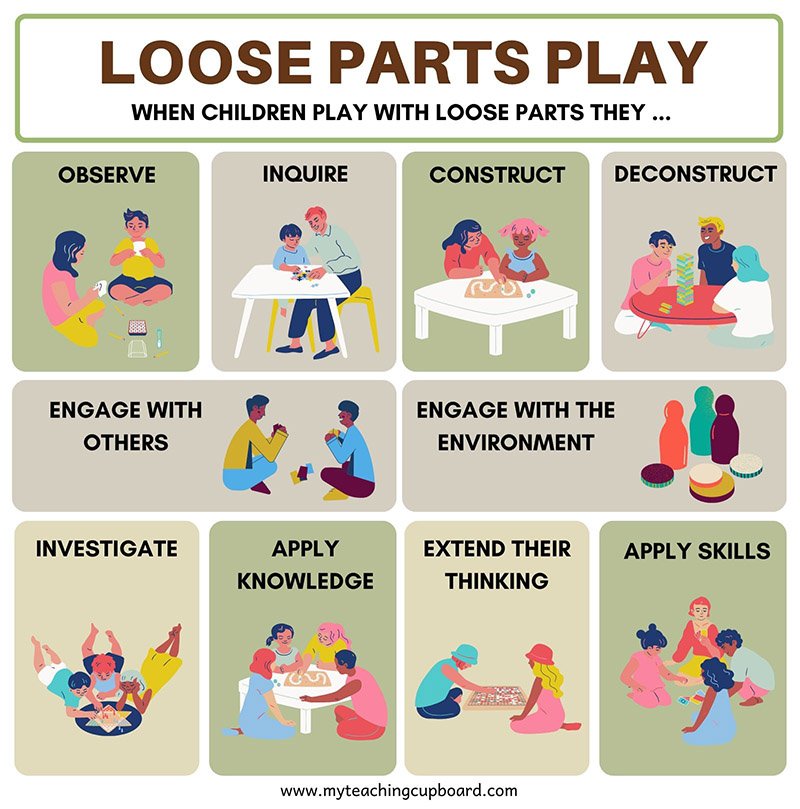The 5 Best Resources for Hands On Learning in Early Childhood Classrooms
Hands-on learning is learning by doing. It is not only fun and engaging, but it’s the most effective way early childhood students learn. Check out the top 5 resources you need to make your classroom hands on learning activities super educational and entertaining!
If you want to keep your young students engaged and on task, there’s no better way than through hands on learning. Hands-on learning is the backbone of all play-based learning and investigative learning classrooms.
There are heaps of wonderful play-based learning resources available to early childhood educators these days. You could spend thousands of dollars fitting out your classroom – believe me – I know!!
If you want to get the best bang for your buck, I’ve got 5 must-have resources that should be on the top of your early childhood classroom resources list.
In this blog post, I will not only be sharing the top 5 hands on learning resources that every early childhood educator should have in their classroom, but I’ll also be sharing some information on the meaning of hands-on learning too. I’ll also give you a quick overview of hands-on learning theory.
Hands-on learning is so important in preschool and kindergarten. Most early years teachers already know this. It’s so easy to think we need all the latest and greatest hands-on learning resources out there - but we don’t!
I’ve been advocating for and teaching a hands-on, play-based learning pedagogy for many years. I’ve purchased resources that are rarely used and I’ve purchased others that are used consistently.
There are really only 5 hands on learning resources that I’ve found to be vital to the success of my play-based classroom. Read on to discover what they are and see some lovely classroom examples of how to use them.
Hands on Learning Meaning
The hands on learning definition is quite literal. If your students are using their hands to experiment and investigate, they are learning by doing, and are demonstrating hands-on learning.
Hands-on learning is a teaching method that actively engages students in the learning process.
Instead of being lectured to or requiring students to memorise information, this approach to teaching encourages students to explore and discover concepts on their own.
Hands on Learning Theory
Research suggests that hands on learning improves retention and overall understanding. It is also a way of teaching that increases student motivation and engagement.
There have been many education researchers that have studied hands-on learning and how it benefits children. One of the most influential of these would have to be Dr. David Kolb. He developed the experiential learning theory (ELT).
Dr. Kolb's ELT is based on the idea that people learn best by experiencing things for themselves. His theory suggests that learning occurs in a four-stage cycle.
concrete experience
reflective observation
abstract conceptualization
active experimentation
Kolb’s research confirms that children learn best through direct experience and active participation. His research has helped to shape the way educators understand how children learn and has led to the development of many hands-on learning programs and initiatives in our schools.
Quote from Maria Montessori about hands-on learning. This quote is one of 72 play-based learning quotes you can print and use in your classroom. You can see all the quotes HERE
Other influential researchers in the field of hands-on learning include John Dewey, Maria Montessori, Kathy Walker, Lev Vygotsky, and Jean Piaget. Each one of these researchers has helped us see how important hands-on learning is for young children's development and learning.
Why Hands-on Learning is Important
Hands-on learning is important because it gives students the opportunity to
actively engage with materials
apply their knowledge
build conceptual understandings
and retain information.
When you provide hands-on learning experiences for your students, your kids will be developing their critical thinking skills, problem-solving skills, and creative thinking too.
This type of learning encourages children to explore, investigate, experiment, and discover concepts on their own.
Perhaps one of the most important benefits of hands-on learning can be found in the vast body of educational research that suggests hands-on learning can help students retain information. When a child can see and experience the concepts they are learning about, their learning sticks.
Another advantage of hands-on learning is the way it can help students develop a deeper understanding and appreciation of curriculum topics and what they are studying. When students can apply their knowledge and understandings in real-life scenarios or through hands-on activities, they can make connections between their play and the curriculum learning objectives.
Hands-on learning is important for K-2 students because:
Hands-on learning is active learning: Young children learn best by doing! We all know that. Most early years classrooms use hands-on learning activities to help their children master the curriculum learning intentions. Hands-on learning is an age-appropriate learning style employed by preschool and kindergarten teachers all over the world because it works. Unfortunately, it sometimes declines a bit in our grade one and grade two classrooms, but it shouldn’t!
All children, no matter their age, learn best by actively engaging with the world around them. Hands on learning allows children to explore, experiment, and discover concepts and ideas on their own. We need to consistently provide our K-2 students with the opportunities to do this if we want them to pay attention, reach curriculum benchmarks, and develop a deeper understanding of our curriculum.
This quote is one of 72 play-based learning quotes you can print and use in your classroom. You can see all the quotes HERE
Hands-on learning supports brain development: Did you know that hands-on learning experiences stimulate different areas of the brain? In particular - the sensory, motor, and cognitive regions of the brain light up when young children investigate materials with their hands. If you are interested in developing strong neural connections and improving the brain function of your kindergarten to grade two students, make sure to offer them plenty of hands-on learning experiences.
Hands-on learning develops creativity and problem-solving: One of the main reasons I am such a huge advocate for investigative play experiences in the K-2 classroom is because this type of pedagogy fosters creativity and problem-solving. Independent learners that can think creatively and solve problems independently should be the goal of every early years classroom.
If we want to prepare our students for the many years of schooling ahead of them and for the future job market, we need to be building their creativity and problem-solving skills.
This quote is one of 72 play-based learning quotes you can download and use in your classroom. You can see all the quotes HERE
Hands-on learning develops social and emotional development: Hands-on learning experiences usually involve working collaboratively with others. Young children quickly develop good communication skills when they are given the opportunity to explore and investigate materials with their peers.
Hands-on learning promotes cooperation and teamwork. When young children can work with their friends on collaborative, hands-on projects, it can also help them to develop empathy for others.
Hands-on learning is fun and engaging: Want to increase engagement? Offer plenty of hands-on learning activities to your K-2 students!
We needed to increase attendance levels at our school, and this was one of the main reasons we introduced an age-appropriate, play-based learning pedagogy into our K-2 classrooms. Hands-on learning activities are magnetic for young learners. It really will keep your students motivated and interested in learning.
We quickly discovered when our students enjoyed their learning experiences, they were more likely to retain information and reach benchmarks too.
Overall, hands-on learning is an effective and engaging way for your young students to learn and develop essential skills and knowledge. It will help children develop a love of learning, and it will set them up for future academic and personal success.
This quote is one of 72 play-based learning quotes you can download and use in your classroom. Check out all the quotes HERE
Hands-On Learning in Early Childhood: The Top 5 Resources for Teachers
Now you know exactly what hands-on learning is and how important it is for your students, let’s look at the 5 classroom resources I include in nearly every hands-on learning provocation I set up.
1. Clipboards and Paper: The Portable and Versatile Resource for Hands-On Learning
If you want to encourage children to document your classroom learning, include a way for your children to do it. Include clipboards and paper in EVERY learning area.
What is it about a clipboard that makes a child feel important?
Have you noticed how transformative these simple resources are in the hands of a young child? These grown-up resources motivate even the most reluctant writers to make marks.
You don’t have to just stick to clipboards and paper though. Blank journals, chalkboards, and whiteboards are other tools young children can use to record their learning. When you provide a way for children to make marks, you will be encouraging purposeful literacy skills in your early years classroom.
Another benefit of using clipboards and paper in your play-based learning areas is the evidence of learning you will be able to collect and use. You’ll learn so much about your student’s developmental learning needs and be able to use their documentation to help you plan follow-up student-aligned lessons. This documentation can also inform future learning provocations that are perfectly aligned with your children’s interests and abilities.
I often turn to clipboards and paper in the classroom because they give my students a portable and comfortable writing surface. So many times our learning provocations are set up on the floor or in tubs and trays. Clipboards are sturdy and easy for little ones to manipulate. They are great to take outside and use on nature walks too. We have a class set of mini A5 clipboards for our children to record their observations and draw sketches on.
add a clipboard to your hands-on learning invitations
2. Measuring Tools for the K-2 Classroom: Enhancing Math Skills
Just like clipboards and paper encourage authentic literacy, measuring tools will encourage authentic numeracy for your K-2 students. When you have set up an investigation area in your classroom, always ask yourself if the space could benefit from the addition of some type of measurement tool.
Real-world math resources like measurement tools are excellent resources to add to ANY and EVERY learning invitation. They are perfect to add to any area that seems to be waning in interest too. The addition of a new resource to a less popular learning provocation will add renewed interest and encourage fresh explorations and experimentations.
Think about adding
Tape measures and rulers
Measuring cups and spoons
Measuring jugs
Balance scales
Digital scales
Stopwatches
Calculators
Check out the math resources room in your school. You’ll be surprised at all the hands-on learning resources you’ll find there. You don’t have to stick to just measuring tools to encourage numeracy learning in your investigation areas.
Other math resources I always have on hand are
Dice
Manipulatives like those coloured bears
Play clocks
Number boards and number lines
MAB and Unifix blocks
Counters
Pattern blocks and other geometric shape blocks
Play money
Dominoes
Ten frames
Playing cards
Geoboards or pegboards
These learning prompts are from my big bundle of 75 Measurement Provocation Prompts.
When the tools are available, and your children are free to use them, so much hands on math learning is going to happen. You will be surprised at all the different ways children will use these resources. Measuring tools and math resources will extend the learning opportunities at any learning provocation.
3. Books for Hands-On Learning: Promote Literacy and Language Development
Don’t confine your picture books and textbooks to your classroom reading area. They make the perfect addition to a learning provocation. In fact, just like clipboards and paper, make sure you add at least one related text to EVERY learning invitation you set up in your classroom.
Picture books, pop-up books, interactive books, and books with tactile elements are traditionally highly engaging for K-2 students. However, an age-appropriate textbook on a subject that a child has an interest in will beat those other traditional books hands-down!
To get a wonderful learning conversation started at any investigation area, simply sit down, and start flipping through the book you have strategically added to the space. It never fails to engage even the most shy of young learners.
Authentic literacy is a joy to observe in any early childhood setting so make sure to include other print-rich resources in your learning centers too. Think about
Posters and charts
Labels
Menus
Maps and Atlases
Magazines
Junk mail
Picture Dictionaries
Recipe books
Manuals and diagrams
4. Loose Parts in the Classroom: Fostering Creativity and Problem-Solving
Oh, how I loooove loose parts! I’d be lost without them. They are the number one MUST-HAVE early childhood resource.
If you want to discover why I love loose parts so much and find out all the benefits these little treasures can have in your classroom, make sure to check out this blog post: The Benefits of Loose Parts Play.
When children work and play with loose parts, they observe, enquire, investigate, construct, deconstruct, and engage with others and the world around them. They are simply a fantastic resource to promote hands on learning. Giving the children in your classroom the opportunity to explore loose parts will allow them to apply and extend their learning.
In 1971, an architect named Simon Nicholson developed the theory of loose parts. He described loose parts as any open-ended materials which encourage creativity and exploration in children. Children will naturally manipulate and use loose parts during their investigative play.
If you want to ensure maximum learning impact, the key is providing loose parts which are open-ended. When you are collecting and offering loose parts, ask yourself, “Can these loose parts be used in a variety of ways and for numerous purposes?”
If you use open-ended loose parts in your classroom learning experiences, your students will have endless possibilities to experience success with their learning and to work in their zone of genius. Loose parts provide K-2 students with resources that are naturally aligned with their developmental needs.
If you are interested in collecting some loose parts for your classroom, you can download a full list of over 150 ideas for open-ended loose parts HERE in my Free Resources library.
This comprehensive list includes cheap and often free loose parts you can easily collect for purposeful loose parts play in your classroom.
5. Using a Classroom Camera for Hands-On Learning: Observing, Documenting, and Creating
A camera is an extension of your clipboards and paper. A picture is worth a thousand words they say so make sure you give your K-2 students the opportunity to visually capture the learning happening in your classroom.
Many teachers implementing the Walker Learning Approach will be familiar with the classroom child photographer role and use classroom cameras to promote close observations, document learning and enhance creativity.
You can find out more about this fascinating Walker Learning-inspired role HERE on this blog post – Photographer Child
The use of photographs in your classroom is certainly useful for documenting learning but if given the chance, photographs can also become a tool for discovering important information about your classroom, the curriculum, and more importantly, the children.
Researchers Byrnes & Wasik (2015) discovered that photographs can facilitate learning in early childhood classrooms and that using photographs gave the children opportunities to capture important aspects of their learning and to revisit and extend on their hands-on learning activities.
When you allow your students to use classroom cameras to document learning in the classroom, you will definitely have a powerful classroom advantage.
Hands-on Learning Conclusion
In summary, the 5 best hands on learning resources for preschool, kindergarten, and first and second grade teachers are
clipboards and paper
measuring tools
books
loose parts
cameras.
These easy-to-come-by resources will enhance your students' learning experiences and take your classroom's hands-on learning experiences to the next level.
Most early childhood teachers already know that hands-on learning is an essential and effective component of their pedagogy. This type of learning allows children to independently explore, experiment, and discover. It promotes a deeper understanding of concepts and ideas too.
On top of these advantages, hands-on learning also stimulates brain development, promotes creativity and problem-solving, and supports social and emotional development.
If you would like to learn more about play based learning and get some great hands-on learning ideas you can use in your classroom, make sure to get my FREE GUIDE to Play-based Learning HERE in my FREE Resource Library.
We often think the latest and greatest classroom learning materials will help us take our teaching to higher levels, but in this blog post, I hope you have found that the basic resources like the 5 outlined above are really the secret weapons to creating engaging and effective hands-on learning experiences for your students.
If you found some useful information about hands on learning resources here in this blog post, please consider sharing it with other educators.
Just CLICK the sharing box below.👇



















